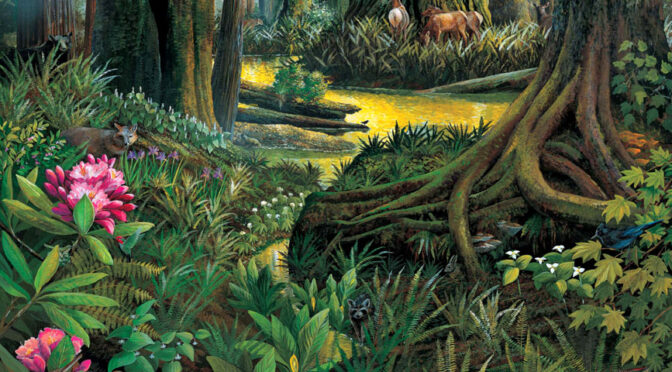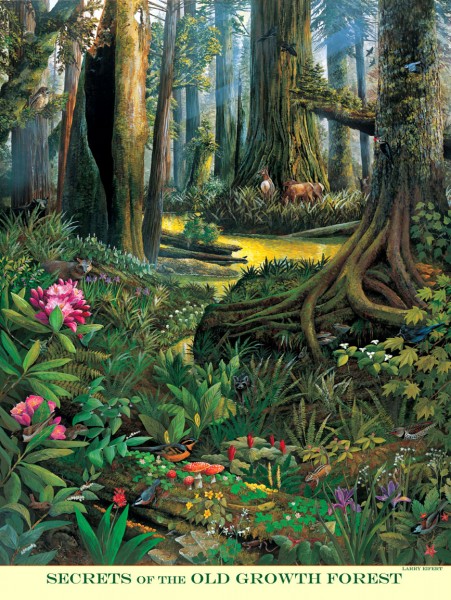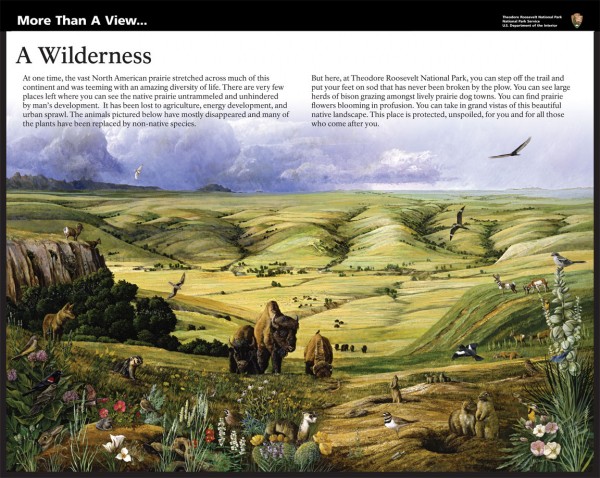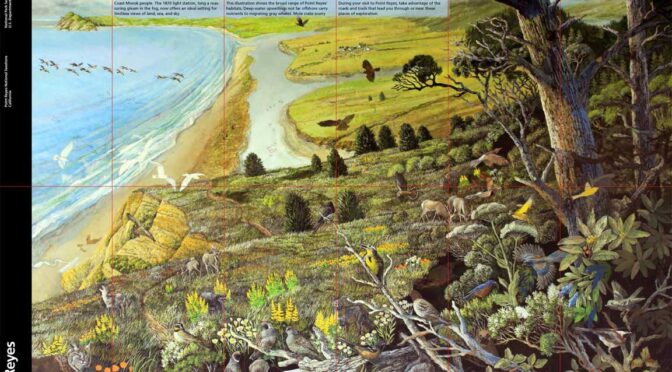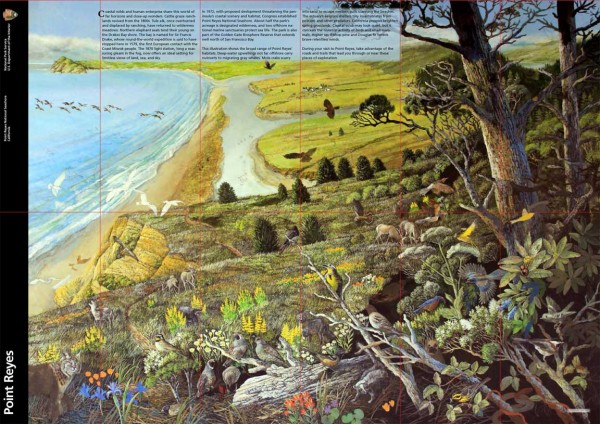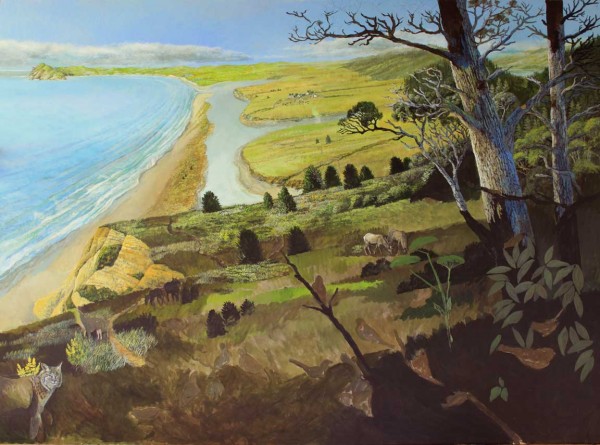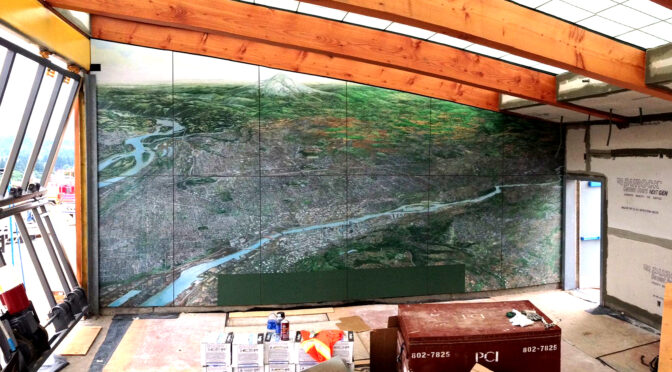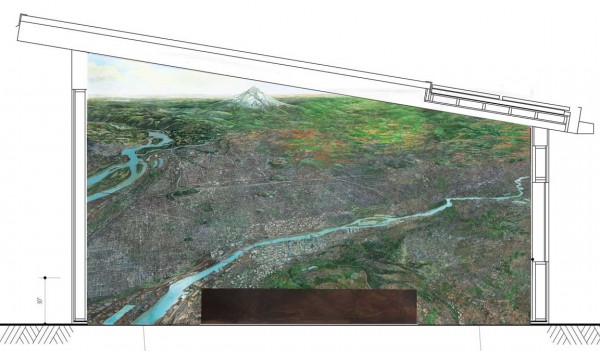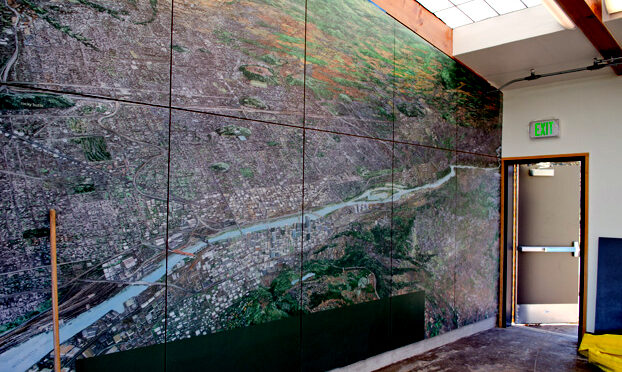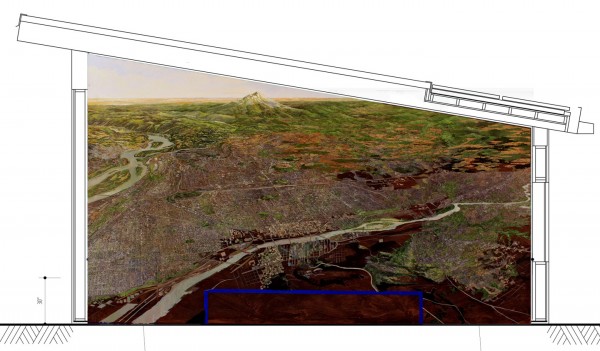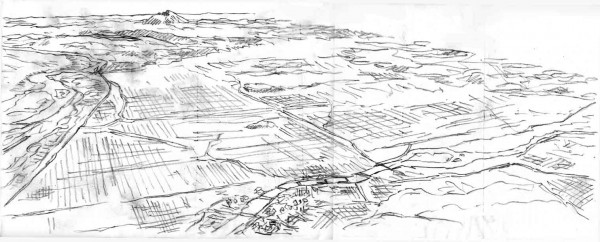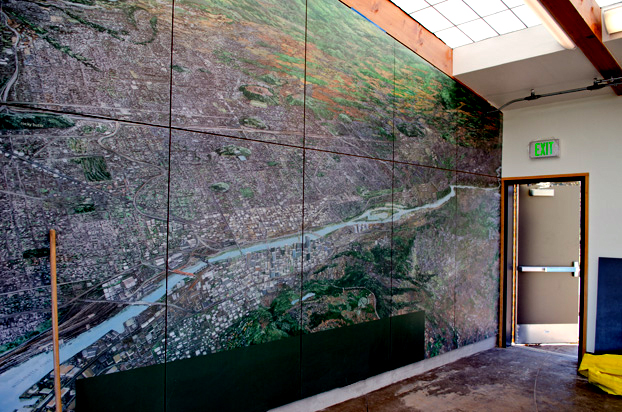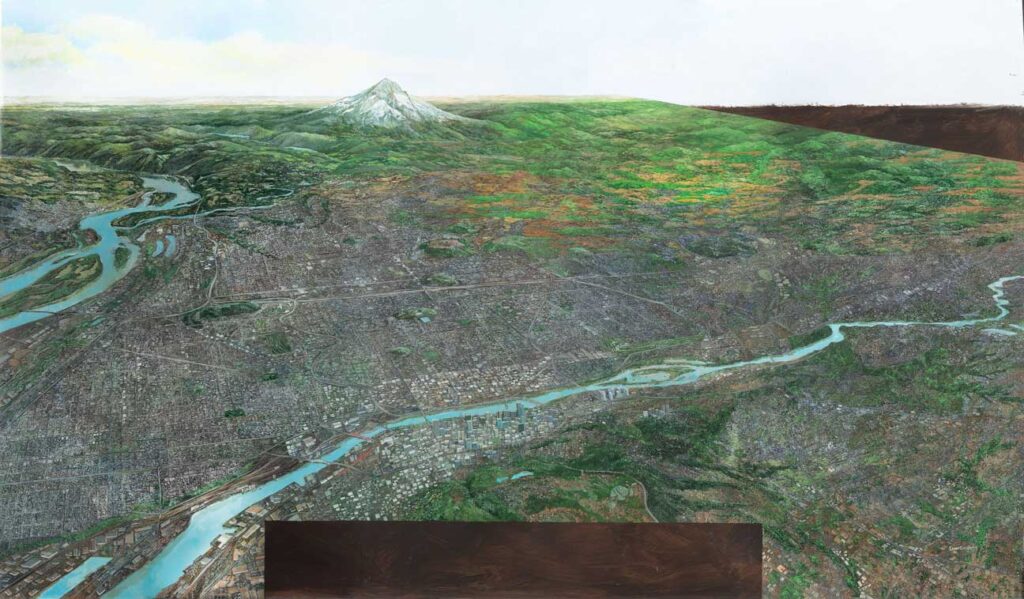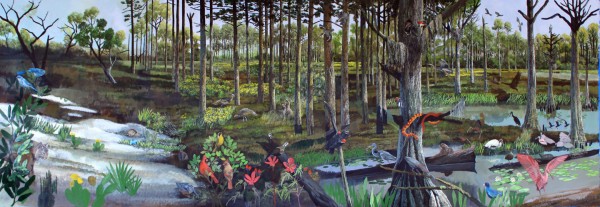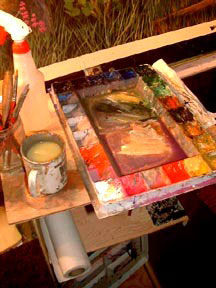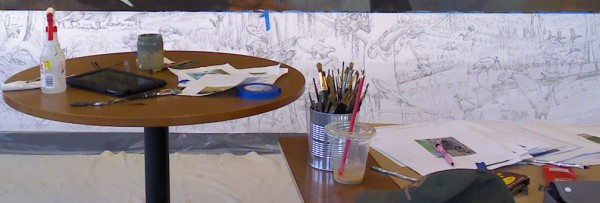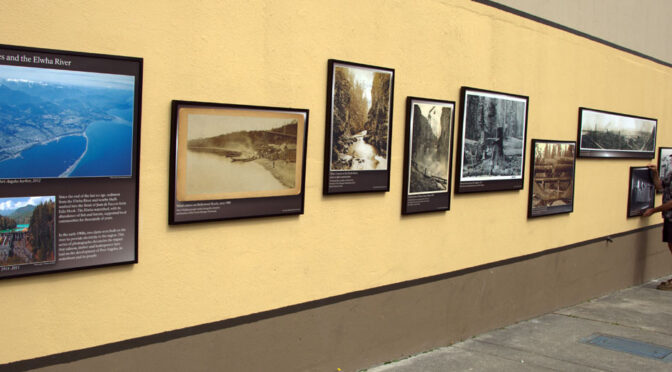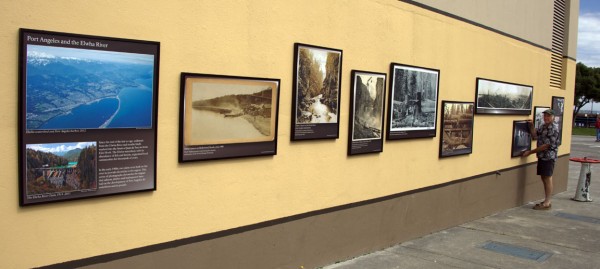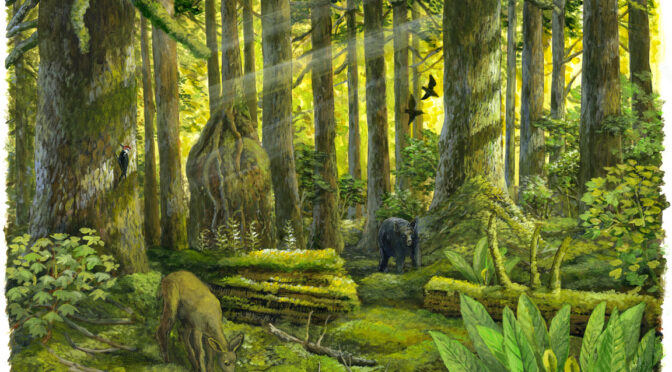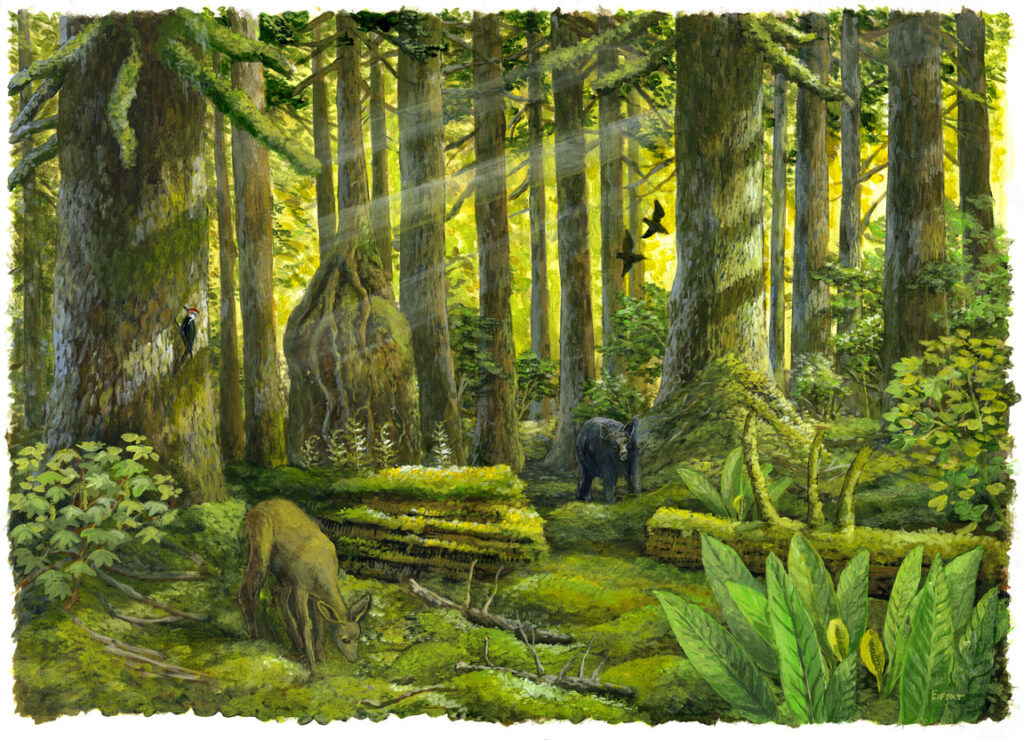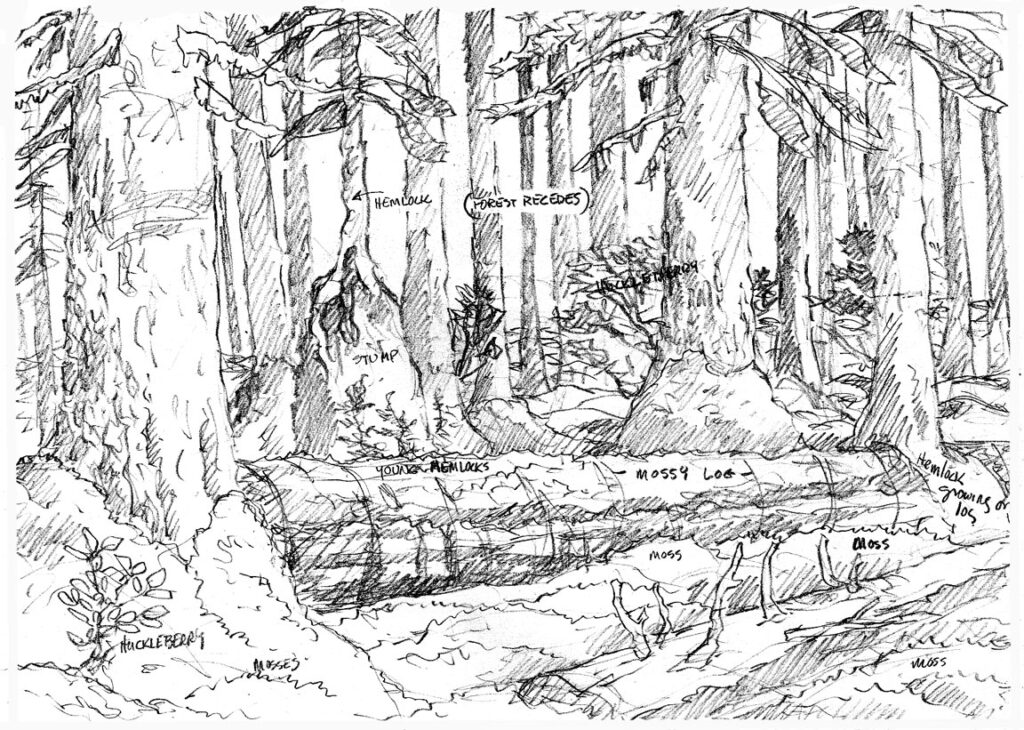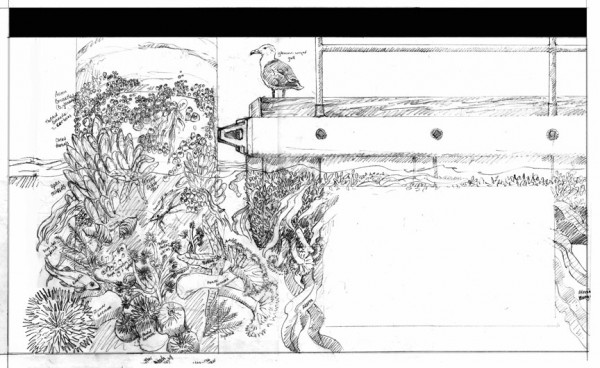A new Larry Eifert poster is now available, an 18″ x 24″ companion piece to the Old-growth Forests poster I recently blogged about. While we’ve printed a jigsaw puzzle of this image before, there was never a poster. The best part of this is that we had the printer roll them – yes, ROLL THEM (how modern can we get) so we didn’t have to do that. Yes, the warehouse is somewhat stuffed at the moment, so help us out.
The poster back is sectioned off into four areas that can easily be photocopied by teachers to develop a lesson plan. We encourage this as it makes for a really good teaching tool. So, help us pay this stupid printing bill: You can buy this poster here.
The original painting is installed in the Prairie Creek museum in Redwood National Park near Orick, California. Next time you’re there to see one of the truly great forests on the planet, stop by and see the painting. Redwood NP has many Eiferts, including three murals and something like forty other paintings scattered around on exhibit panels and waysides. It’s like a big art gallery in the forest.
The forest at Prairie Creek: it has 10 times the biomass of a typical tropical rain forest, and holds the most living or once-living organic matter of any forest on Earth. No wonder I like it, no wonder it’s a park.
Thanks for reading this week.
Larry Eifert
Click here to go to the online blog this was to.
Or click here to follow me on Facebook. I post lots of other stuff there.
Click here to go to our main website – packed with jigsaw puzzles, prints, interpretive portfolios and lots of other stuff.
Click here to check out what Nancy’s currently working on with her photography.
Click here to go to Virginia Eifert’s website. Her books are now becoming available as Amazon Kindle books.
